If he weren’t already in the hardwood floor business, customers of Stephen Diggins might have questioned his sanity when he posted an article called “What Causes Mysterious Black Spots on Wood Floors?”
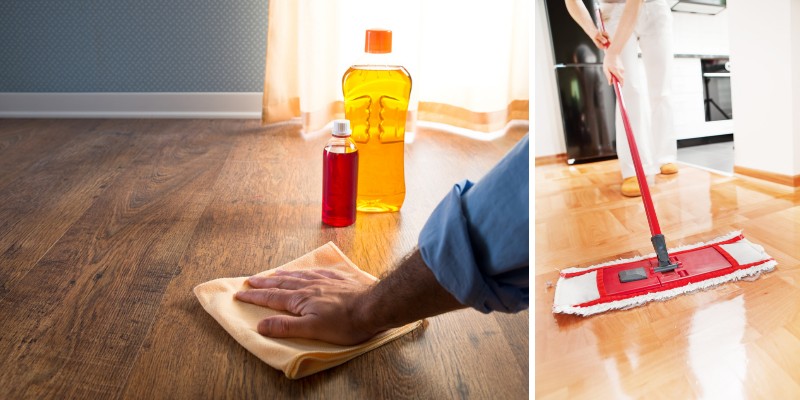
Discounting the usual suspects (kids, pets, rolling suitcases, shoes, bikes and other offenders), Diggins decided to investigate.
His customer’s oak floor had become “littered” with tiny black and gray spots following re-sanding. First, he was stumped but after additional research and consultation with other floor experts, he came up with the solution.
Curious about what he found? Read about his solution at Wood Floor Business (see the resources below) as a precursor to figuring out what cleaning products and techniques will work best on your hardwood floors.
What causes black stains on hardwood floors?
There is no single answer, even when mysteries aren’t factored into the equation! Black stains can be triggered by spilled liquids, grease and food that have not been properly cleaned up, water damage caused by ceiling or plumbing leaks, pet urine, lotions and transfers of soil left behind by shoes, wheeled carts, bicycle tires and, at the extreme, mildew or mold.
White stains vs. black stains: What’s the difference?
If you notice white stains on your hardwood floor, these are most likely signs that an offending stain hasn’t been fully absorbed by the wood (e.g., a circular stain left by a bottle).
While black stains often reveal permanent wood damage that calls for more aggressive remedies, white stains usually indicate that the issue is confined to the finish or waxy surface layer rather than having penetrated into the wood itself, so clean up tends to be faster and less labor intensive.
10 Effective Ways to Remove Black Stains
Let’s now discuss some popular and effective ways to clean black stains from your hardwood floor:
1) Hydrogen peroxide and water treatment
Not only is a mix of hydrogen peroxide and water an effective way to remove black stains, but this treatment is safe for kids and pets, too.
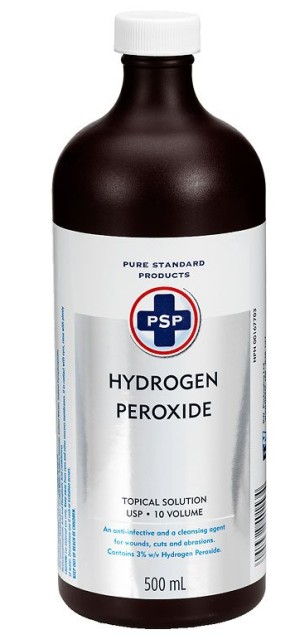
Delivering antibacterial, antiviral, and anti-fungal properties, this combination removes surface dirt, sanitizes and tackles stubborn stains.
Mix 1 cup of 35-percent peroxide into a gallon of water, fill a spray bottle and target small areas of the floor, using a nonabrasive cloth or microfiber mop to work the stain out.
Dry each section before moving on to the next one. Used properly, hydrogen peroxide will not damage hardwood floors.
2) White vinegar and cold water treatment
As the least expensive cleaning agent for removing black stains from wood floors, white vinegar is easy and simple to use.
After clearing the floor and vacuuming up dust, fill a bucket with a solution of ½-cup white vinegar per one gallon of warm water.
Soak your mop head or rag in the solution and wring it out so it’s “damp-dry.” Never use a soaking wet mop to do the job, say experts at LoveToKnow.
Start in one corner and mop in the direction of the floorboards to minimize streaks. Keep dampening the mop or rag as you move to new areas.
If you’re tackling a large stain and the vinegar mix gets dark, may have to refresh the solution before moving to different floor sections.
3) Oxalic acid (wood bleach) treatment
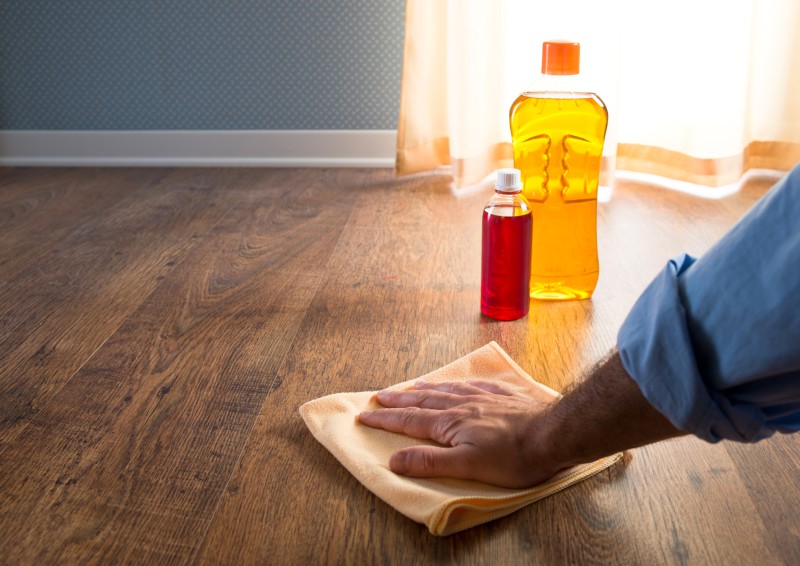
Oxalic acid is also a safe, organic stain-removal alternative that is made from vegetables like spinach and rhubarb.
It works particularly well on black urine stains, so if your problem originated with an untrained puppy or incontinent cat, this method should work for you.
Dissolve 2 tablespoons oxalic acid in 4 cups of hot tap water. Fill a spray bottle and soak the stain, allowing the mix to soak in before wiping the area clean and letting it dry.
Re-apply if the first application proves insufficient. Finish the job by mixing 2 teaspoons of borax with a cup of hot water and damp-clean the treated area.
This will neutralize and reduce residue left behind. Finish up by thoroughly drying the area before walking on it.
4) Steam mop treatment
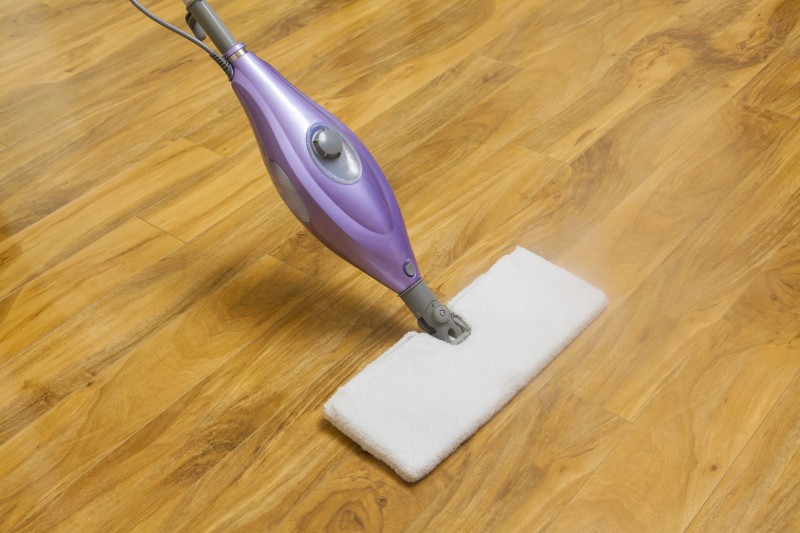
The proliferation of steam mops on today’s market offers homemakers a dizzying array of options, but with the benefits come warnings, according to Mariette Mifflin writing for The Spruce.
If you’re a newbie, read her advice before starting your stain removal journey because if used incorrectly, a steam mop can cause black stains.
If you choose to use one, follow these specific directions: Sweep or vacuum debris. Fasten the microfiber cloth to the floor tool, set the unit for low or medium output and slowly pass the machine over the stain to clean the area.
Replace the cloth if it darkens, indicating stain absorption. Some homeowners recommend using distilled rather than tap water to do the job.
5) White vinegar and grapefruit oil treatment
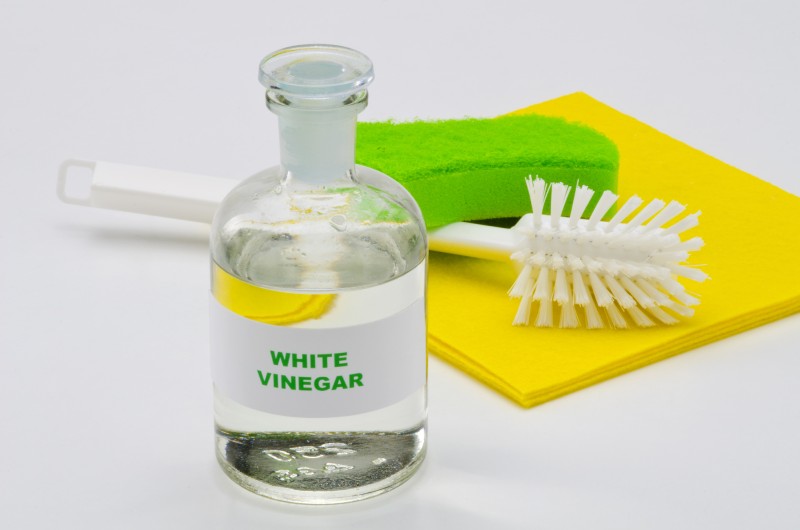
The use of essential oils has extended far beyond therapeutic uses, so it should come as no surprise that a recipe recommended for hardwood floor black stain cleanup includes grapefruit oil or whatever other oil you happen to prefer.
In a bucket, mix 2 cups of warm distilled water, ¼-cup vinegar and 20 drops of essential oil (it’s okay to mix 10 drops each of two citrus or woody oils for a distinct fragrance).
Fill a spray bottle with the homemade floor cleaner. Vacuum or dust the floor to remove dust and dirt and then spray stain areas.
You can use a microfiber mop or rags to work the mix into the floor and once the stain is removed, make sure the areas dry completely before opening the area to traffic.
6) Enzymatic cleaner for pet stain treatments
The competition for pre-mixed enzymatic cleaners formulated to remove dark stains on hardwood floors has gotten fierce, which is why you’ll want to consider several well-reviewed products written by pet owners before making a buying decision.
Protocols for using these products are fairly standard but always read the label or packaging to see what the manufacturer recommends before working on the stain.
In all cases, avoid formulas that includes ammonia. Bustle editors suggest sprinkling baking soda over the stain area and allowing it to sit for a few hours or overnight to start the clean-up process.
Vacuum or brush up the baking soda before using the enzyme-based product and you’ll find that both the discoloration and odor have been eliminated.
7) Sanding and sealing treatments
For homeowners who have just discovered black staining on hardwood flooring because they rolled up a carpet and found they needed to address a problem that has had months or years to impact the wood, sanding and sealing may be the only option you have to remedy the floor and get rid of the offending stain(s).
Professionals recommend assessing the problem by removing a 1mm layer of surface using 36- or 40-grit sandpaper to see if that will clean up the stain.
If that doesn’t work, a second sanding may do the job or reveal the sad truth: you might need to replace one or more boards.
If one or two shallow sanding treatments do the trick, match up the color of your hardwood floor with the stain that best blends in and seal the floor to finish the job.
8) Liquid detergent and cold water treatment
Who doesn’t remember TV ads depicting baby ducklings being rehabilitated following oil spills via baths of water mixed with dishwashing liquid?
It should come as no surprise that using Dawn or sister products can help tackle stains on your hardwood floors, but in order to be effective, the product must be pH neutral or you could do more harm than good.
The cleaning process begins by mixing equal amounts of liquid detergent and water. Start in a small area to maintain control over the process, scrubbing the stain area with a rag or cleaning cloth.
Once you finish working each section to remove stains, use a clear water rinse over all of the effected areas so you don’t leave soapy residue behind. Finish the task by employing rags or cloths to thoroughly dry all areas before replacing rugs and furniture.
9) Mineral spirits as a treatment
For homeowners, the name Bob Vila is sacrosanct. As the most high-profile authority on all home-related subjects, his suggestion — using mineral spirits to mediate black stains on hardwood floors — is based on decades of experience.
Mineral spirits treatments are easy: “douse a clean and absorbent cloth in the mineral spirits, then wipe down the wood whose finish needs a refresh.”
Vila advises homeowners to “continue rubbing the wood until the cloth no longer picks up any residue.” If the stain is hard to reach, put mineral spirits on a toothbrush to clean up the area and if your wood floor is particularly old and damaged, Vila suggests cutting unadulterated mineral spirits with a mild wood floor soap.
Apply the mix with a sponge or paintbrush before wiping the excess away with a clean cloth. Exercise caution and wear rubber gloves if you choose this treatment because mineral spirits are flammable.
10) Bleach and water mix treatment
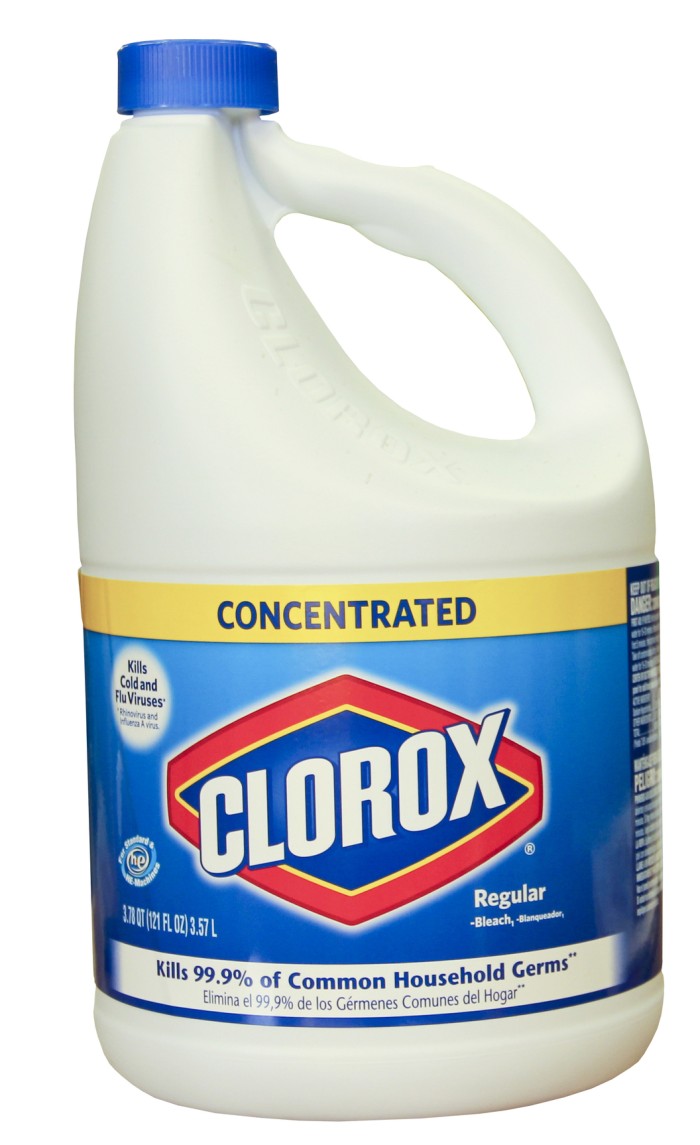
If your black stain concern originated with mold or mildew, bleach may be the only way to get results.
But which bleach is best? According to the Wood Doctor website, “There are three different kinds of wood bleach and they each act on different stains.”
These three types are oxalic acid (liquid or crystal form), hydrogen peroxide and chlorine. Since we have already addressed oxalic acid and hydrogen peroxide, this information pertains to chlorine bleach.
The process of using bleach begins by sanding or striping a bit of the area to assess the depth of the stain. If it’s not too deep, household bleach mixed with hot water should take care of the problem.
Saturate the stain with the bleach-water mix and it should begin to disappear. Once you’re satisfied with the result, wash the area with plenty of distilled water to stop the bleaching action.
Dry overnight before refinishing the area. As an alternative to chlorine bleach, some contractors recommend substituting swimming pool bleach (dry calcium hypochlorite) for even better results.
A final word
Having reviewed the aforementioned household products and methods that include bleach, hydrogen peroxide, dishwashing detergent, vinegar, mineral spirits, mops and other solutions that are likely in your home’s cleaning inventory right now, there is one category of cleaner that should be avoided at all cost: abrasives.
These products are made to tackle daunting jobs, not hardwood floors that while tough, aren’t invincible and can easily be damaged during your efforts to remove black stains.
While baking soda is considered to be one of the most effective, low-cost, natural products for difficult cleaning tasks — and it is included on this list as an effective pre-treatment before using enzymatic cleaners (#6) — baking soda is an abrasive that, when mixed with liquids and used as a scrubbing paste — can damage wood floors.
That stated, there are many more black stain removal remedies that aren’t addressed here, including some offbeat options like magic erasers, mayonnaise, oil and even toothpaste.
The jury is still out on some of these, but who knows what treatments will be considered both effective and safe down the road?
Related Posts
- Different Types of Finishes That Make Concrete Floors Aesthetically Appealing
- 10 Main Pros and Cons of Acid Stained Concrete Floors
- 3 Methods to Remove Candle Wax From Your Carpet (With Iron, Hair Dryer, Natural Products)
- 13 Types of Carpets for Your Home (By Material, Pile, Padding)
- How Much Does it Cost to Epoxy a Garage Floor? All Details Below
- 20 Different Types of Tiles for Home Flooring, Walls, Countertops, Backsplash
Leave a Reply